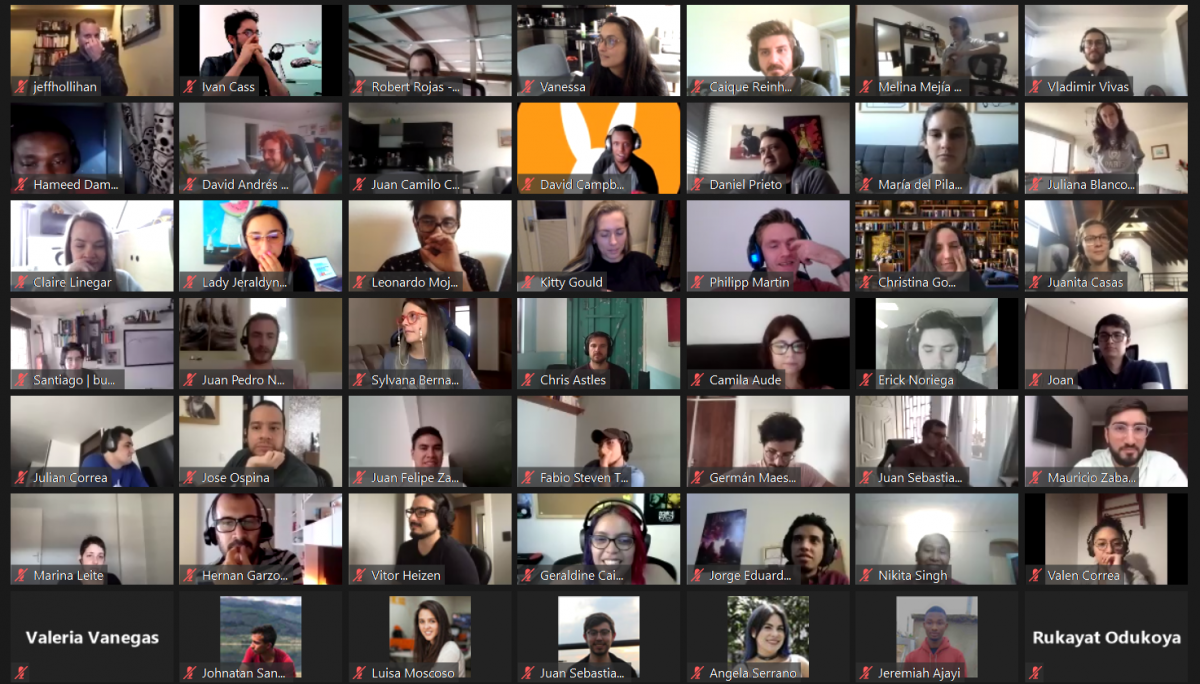I’m a team leader at Bunny Studio. and, today, I’m waking up in Barcelona. My team members are a few hours behind me in Colombia. My own team leader is in Argentina. Other co-workers live around Europe, Asia, and Africa.
How in the world does one lead a team that spread out… all over the world?
Well, let’s both get some coffee and I can share what we at Bunny Studio have learned so far. It’s still morning in Barcelona, remember. Coffee first, deep talking second.
But if you prefer to watch a video instead, click here:
So, what’s the problem?
Being a leader is always challenging. If your team is all around the globe though, things can get even more tricky. How can you trust a coworker whom you’ve never met in person? How can you build cross-cultural connections? What about the time zone differences? And how does a leader convey their vision through all these challenges?
Well, remote leaders need to commit to communication.
How do I do that?
I block out two hours each day dedicated to connecting with others. During this time, I read up on what has been happening on our Slack channels and Confluence boards. These act like ongoing group chats. They’re both great tools to use to stay in contact. Chats range from a discussion of a new contract we won or happy squeals over the puppy a team member adopted yesterday.
Communicating non-verbally across cultures is a skill that needs constant work. It’s because of this that successful leaders are excellent writers. They also know the value of a well-placed emoji or .gif.
What else? Be concise. Passive reading is hard. The more you share, the more gets lost. Remember to use everyday language and mirror the person you are chatting with. This creates a shared connection across cultures. Also, be predictable and share important messages at consistent times. This will help your team focus on important content over chatter.
If a leader wants to influence their team, they need to absorb what everybody around them is doing. It’s a big task, but communication makes it much easier.
Good point. I agree.
Okay, so communication is important. What else can remote leaders do to overcome challenges? Well, they need to define and live up to expectations.
Let’s say that I’m working on a project but my shift starts five hours after the rest of my team. To succeed, we all to be following the same map and have the same priorities. At Bunny Studio each team member has a ‘Tour of Duty’ document. These define what both the team member and the leader expect from the employee’s time at the company. It also specifies a time frame for achieving those goals. That way, everyone is on the same page from day one.
Remote leaders also need to be badass storytellers. Why? Well, brainstorming and strategizing over a long distance is hard. But, happily, not impossible. Stories bring problems and ideas to life, making them easier to share in a group.
Here are some storytelling methods that have worked for me:
- Brainstorm together — Set aside an hour and share the problem you are trying to solve as a team. After some time for personal reflection, the team shares their ideas in the group. Following the meeting, a shared document is used to continue sharing ideas.
- Share a personal or team story — Turn ideas, doubts and dreams into stories that resonate. Get personal and put names in those stories. This causes the stories to have a greater impact. Every group meeting you have, refer to the team’s story.. Over time, the story will come alive and your team members will begin to feel their role in it.
- Cultivate a learning culture — People are then more eager to share any new knowledge. This sharing leads to innovative conversations and ideas. Every team member, including yourself, should spend an afternoon per week on strategy and learning.
Oh, and one more thing. Remote leaders need to be approachable and available to their team members. Every problem is a possibility to build a stronger team bond. Not only that, but it’s important to ask your team members for their thoughts and opinions. The most powerful written words for a leader are: ‘what would you do?’. This also means that you should ask for advice when you can. It helps to break down barriers and draw the team closer together.
Okay. How are you doing for coffee? I’m going to go get another one.
I’m fine, thanks. I’d love some more practical advice, though. Right, so how does Bunny Studio tackle all these challenges? Well, we discovered tools that helped us set up our own remote open office space. In a nutshell, we did three things. We opened up interactive communication channels to create an atmosphere of togetherness. Like I mentioned before, we use Slack and Confluence for this. We also adopted a remote-first strategy. This means that in group meetings, everyone connects through their own device. This is true regardless of whether they work in the physical company of coworkers or not. Finally, we always work to build forums for digital cross-team connections. These can take the form of video breaks, hackathons and hangouts for virtual tea breaks. Informal meetings lead to candid feedback which, in turn, nurtures blameless collaboration. Hey, thanks. Okay, back to work. No worries. Despite all the advice I’ve shared, there’s no right way to lead a remote team. There is no secret ingredient to becoming a successful leader. There are only ways to learn from mistakes made by others. So, learn from my mistakes. Commit to communication. Define and live up to expectations. Be a badass storyteller. And be approachable. Talking things out over coffee helps a lot, especially if it’s remotely.









